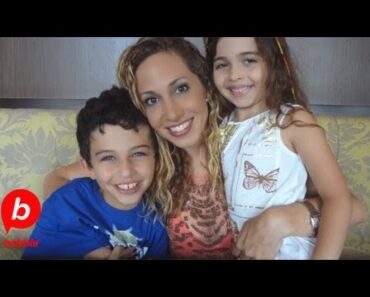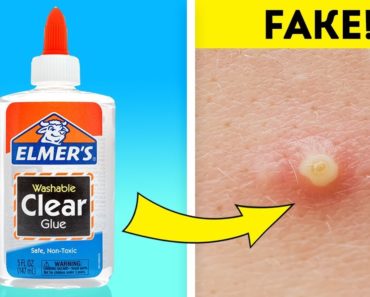By the time he was two and a half, Malikai Morrell had already suffered through a whopping 11 ear infections. His family doctor examined him regularly and wasn’t concerned, but when Malikai started junior kindergarten, Amy Morrell realized her son was really struggling. “I noticed him staring at my lips when I was talking,” she says. “And when I was reading him books at night, he would put his ear right up to my mouth.” She decided to take him for a hearing test and, sure enough, he failed.
The family got a referral to an ear, nose and throat doctor (ENT), who recommended ear tube surgery. It’s been nearly a year since the procedure, and Malikai, now five, can hear perfectly, even when others are whispering. He also no longer gets ear infections.
Myringotomy—the medical name for ear tube surgery—is the most commonly performed childhood surgery done under general anesthesia. By the age of three, one out of every 15 children will have received ear tubes, says Trina Uwiera, a paediatric otolaryngologist in Edmonton.
Why do kids need ear tubes?
Kids who undergo the procedure are usually those who experience chronic ear infections or related hearing problems. Joan Robinson, editor of the Paediatrics & Child Health journal at the Canadian Paediatric Society (CPS), and a co-author of the CPS’s statement on ear infections, says the general definition of “chronic” is three ear infections over a six-month period or four episodes in one year.
How do the tubes help? They’re a temporary solution that works to ventilate the middle ear, which diminishes the frequency and severity of ear infections and allows any fluid to drain on its own. “We’re just bypassing these kids’ immature Eustachian tubes and trying to buy them more time so they can get past the point when it’s most problematic,” says Uwiera.
The surgery is usually performed between the ages of seven months and six years; after age eight, kids’ own Eustachian tubes, which drain the middle ear to the back of the nasal cavity (and also control ear pressure), have fully developed and can do their job properly, rendering synthetic tubes obsolete.
Before surgery, Malikai weathered the infections all right, but he ended up with hearing loss (albeit most likely temporary) from fluid buildup behind the eardrum. “When you get an ear infection, the fluid that’s in there can last up to three months. The problem is that if it doesn’t go away, you’re more likely to get another infection, because there’s already fluid in your ears,” says Uwiera. She compares it to a fully furnished apartment, waiting for bacteria to move in. “Ear infections and fluid go hand in hand, but they don’t always happen at the same time.”
Ava Percy, 8, never had ear infections, but as a toddler she had a speech delay that prompted her parents to have her hearing checked. The test was inconclusive, but because hearing problems are common in individuals with Ava’s genetic condition—she has what’s known as a distal deletion on one of her copies of chromosome 18—her parents followed the ENT’s recommendation and opted for ear tube surgery when she was three. “Over the next year, her speech did improve. It most definitely was the right choice,” says her mom, Lori Percy.
The surgery is also beneficial for children with cranial-facial differences, such as those with a cleft palate or Down syndrome, that impact the Eustachian tubes’ function. And ear tube surgery can also help kids with ear difficulties caused by a chronically plugged nose, often due to allergies, says Uwiera.
What to expect on surgery day
The procedure involves making a small incision in each eardrum. The surgeon will remove any fluid or infection, if present, and then place the tubes in the incisions, with one end of each tube opening to the middle ear and the other draining into the ear canal. Depending on hospital procedure, the day surgery takes less than 20 minutes in the operating room. General anaesthetic is used because the child needs to hold perfectly still and also because the initial incision in the eardrum is painful, says Uwiera, who has performed thousands of myringotomies.
Children must fast before the surgery because of the anaesthetic, and they’re watched after they awaken to make sure they can take fluids without throwing up (grogginess and nausea are possible side effects from the anaesthetic). Most children are up and on their way after a couple of hours.
“It’s so simple,” says Percy, whose daughter is now on her fifth set of ear tubes because of congenital hearing problems. “It’s pretty much an in-and-out, 10-minute procedure. It’s so quick and so easy.”
It’s rare for children to even have pain afterward, and if they do, over-the-counter medications work just fine, says Uwiera. Older kids will sometimes find there are popping or crackling noises as the fluid shifts and drains. “They find it more disconcerting than painful. It’s just kind of weird,” Uwiera says.
The surgery has few complications. In one percent of cases the eardrum perforation doesn’t close up on its own, says Uwiera, and it might need to be patched in a day surgery.
How ear tubes help
After the procedure, most families notice far fewer ear infections. And if the child does get one, it’s easy to identify—parents can actually see the infection draining out and crusting over, kind of like snot—and it can be easily treated with antibiotic eardrops.
For kids with hearing loss due to fluid trapped behind the eardrum, there’s an almost immediate improvement. “We’ll see these children waking up in the recovery room with their hands over their ears because it’s too loud,” says Uwiera. “If they’ve had the speech delays that often come along with not being able to hear things properly, their speech usually picks up within days to weeks, depending on how delayed it was and their age and hearing.”
Most tubes stay in place for about a year; as the eardrum grows, it lifts the tube out into the ear canal, where it makes its way into the world and usually gets lost in bedding or a carpet. The tubes are tiny, about the size of a grain of rice—it’s much easier to locate a baby tooth that’s fallen out, for example. Parents likely won’t even know the tubes have fallen out, but regular follow-up visits with the ENT would reveal that it’s happened.
Does ear tube surgery ever have to be repeated?
About eight percent of kids who have ear tube surgery need a second procedure, says Uwiera, because the ear infections or any associated hearing loss returns. In some cases, the tubes fall out too early, before they have a chance to do their job. Certain risk factors make a second procedure more likely, including attending daycare (where children come into contact with more cold viruses) and exposure to cigarette smoke, which increases inflammation in the respiratory tract and ears, and decreases the ability to clear the throat, nose, and ears of bacteria , making it more likely for a child to develop an ear infection from a cold.
There’s also a strong familial component. If a parent or sibling has ever had ear tubes, it increases the likelihood of a repeat surgery for the child.
Ashley MacBeath’s son Jack, 6, is on his second pair of ear tubes. His first set was put in at 18 months to treat chronic ear infections. They worked perfectly, but when they fell out around his third birthday, he started getting ear infections again. His parents also noticed he was having trouble hearing, so another myringotomy was scheduled when Jack was four years old.
Incidentally, Jack’s dad had ear tubes twice as a child and knew first-hand what an impact they had. “We didn’t even hesitate,” says MacBeath. “If these come out and they tell us to do it a third time, we absolutely would—they’ve made a huge difference for him.”
The adenoid connection
In Jack’s case, the doctor recommended he have his adenoids taken out when his first set of ear tubes was inserted. Adenoids are small glands located in the roof of the mouth where the nose connects to the throat. “He was getting a lot of fluid trapped behind his eardrums, and they thought removing the adenoids would give him some more room,” says MacBeath. In some cases, the adenoids can act like a physical dam that impedes the drainage from the ear into the throat, so taking them out to remove the blockage is not an uncommon procedure, especially if it’s a repeat myringotomy. “If the child is over the age of four and on their second set of tubes, often we’ll take adenoids out as part of the treatment of the ears,” says Uwiera.
Surgery alternatives
Some parents swear by methods they believe can help kids get over a cold before it develops into an ear infection, such as flushing the nose with salt water or teaching them how to pop their ears by moving their jaw a certain way. There are even devices that claim to help kids clear their ears. But experts say there aren’t enough studies to prove these techniques and products are helpful.
“The most important thing is to try to prevent your child from getting an ear infection in the first place,” says Robinson, who recommends the good old-fashioned cold-prevention techniques of handwashing and staying away from sick people.
Some families choose to skip the surgery and suffer through the infections, knowing that children eventually develop better immunity to colds (and therefore will get fewer ear infections). And as they grow, kids’ Eustachian tubes mature and begin to work properly. What’s more, long-term studies show that by kindergarten, most children with hearing loss from chronic ear infections (who didn’t get ear tubes) have caught up with their peers.
However, many parents are not willing to take a wait-and-see approach. “Families are potentially getting very frustrated because children can’t hear things, and they can’t speak and be understood,” says Uwiera. “You’re not hoping to get better in three years—you’re looking for something that’s going to let you function more readily, earlier.”
The truth about swimming with ear tubes
There’s a myth that kids with ear tubes can’t go swimming. But in fact, they can, say Uwiera. That dated recommendation resulted in a generation of people who were scared of the water and never learned this life-saving skill. Children who have ear tube surgery should only avoid the water for seven days post-op, says Uwiera, unless otherwise specified by their healthcare provider. After that, they can jump right in, just like any other kid.

































